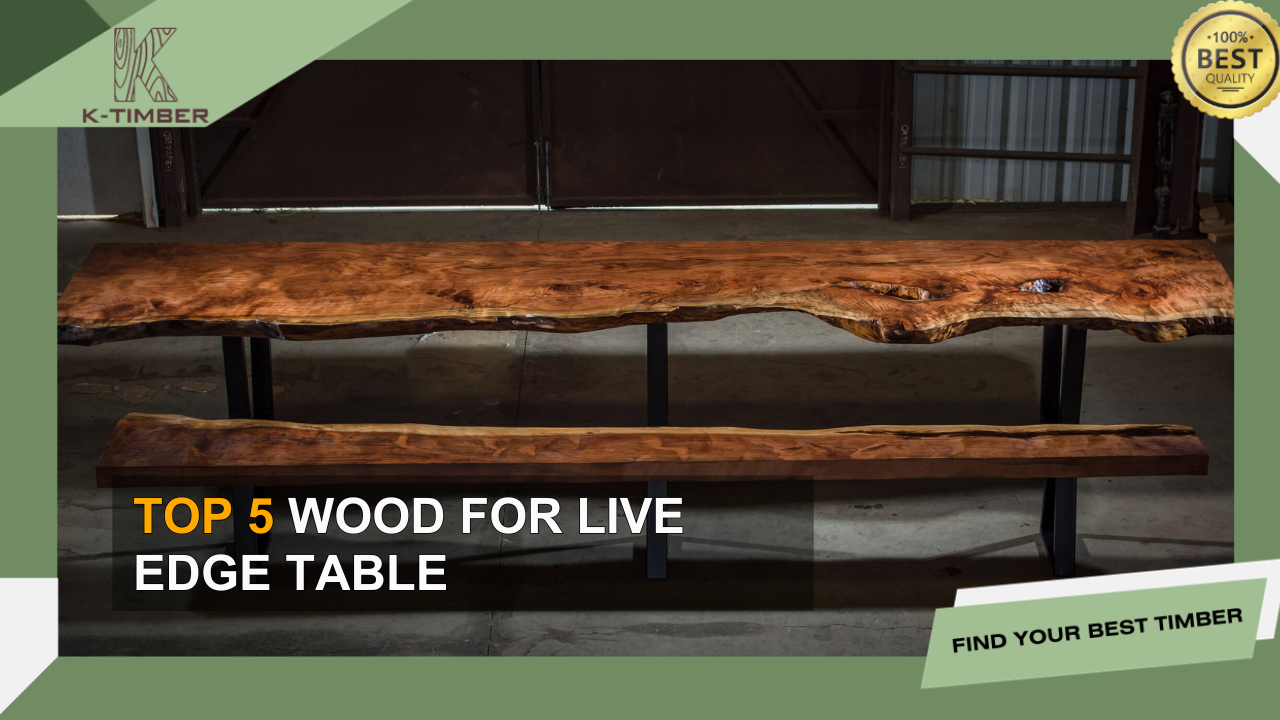Iroko is one of the highly durable, versatile woods with a natural resistance to mold. Hence, this type of wood is very popular in Europe, America, and the Middle East, and is used for furniture. Taking care of Iroko wood surfaces and furniture not only helps maintain its natural beauty but also protects it from damage and extends its service life. So, how is it appropriate to care for Iroko wood, and how to preserve Iroko wood furniture so that it remains durable and beautiful? Let’s join K-TIMBER to find out more in the article below.
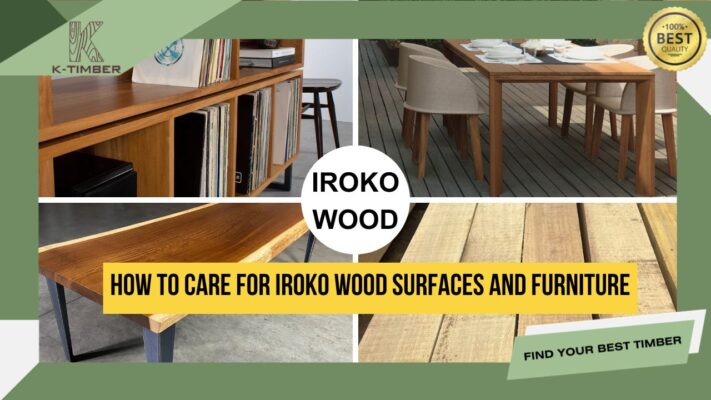
Table of Contents
Iroko: Durable Hardwood Resistant to Weather Conditions
Originating from the forests of West Africa, Iroko wood is recognized as a valuable economic resource. Iroko is extremely durable and flexible, with outstanding resistance to mold and insects, making this wood an excellent choice for both high-end furniture and outdoor constructions like decking, staircases, and outdoor furniture sets.
On the international market, Iroko wood is highly valued and has significant commercial value due to the growing demand in construction projects and interior decoration. With its remarkable ability to withstand harsh weather conditions, Iroko wood has a high water resistance, limiting warping, shrinking, and cracking due to changes in temperature and humidity.

Moreover, Iroko contains a high level of tannins, providing effective resistance against mold and insect attacks. With these outstanding features, one might wonder whether this type of wood requires much care.
The answer is yes; although Iroko is known for its excellent durability and natural resistance to environmental factors, it does not mean it does not require care and maintenance. Therefore, taking care of Iroko wood and maintaining its durability for interior projects is extremely necessary.
READ MORE: Iroko Wood: Properties, Characteristics & Uses
Why Caring for the Surface of Iroko Wood Furniture
Despite possessing superior durability and an exceptional ability to withstand weather conditions, Iroko wood furniture that is well-maintained and cared for retains its natural beauty and original color. Specifically:
- Protection from environmental factors: Prolonged exposure to weather elements such as sunlight, high temperatures, and rain can cause fading, cracking, and deformation of the wood. Caring for the surface of Iroko wood with specialized hard wax oils such as Timber Tect, Bison Wax, or Osmo Top Oil creates a protective layer, helping to minimize environmental impacts.
- Maintaining natural beauty: Iroko wood is highly valued for its natural color and grain pattern. Using maintenance measures like polishing enhances the shine and color durability of high-quality furniture pieces.
- Increasing durability: Iroko wood furniture, when properly taken care of, not only lasts longer but also slows down the aging and deterioration process of the wood. Regular maintenance measures like cleaning, polishing, and care can help the wood resist harmful environmental factors.
- Economic value: Iroko wood furniture holds high economic value, not just because of the wood quality but also due to craftsmanship and design. Taking care of this surface not only reduces the cost of future repairs or replacements.
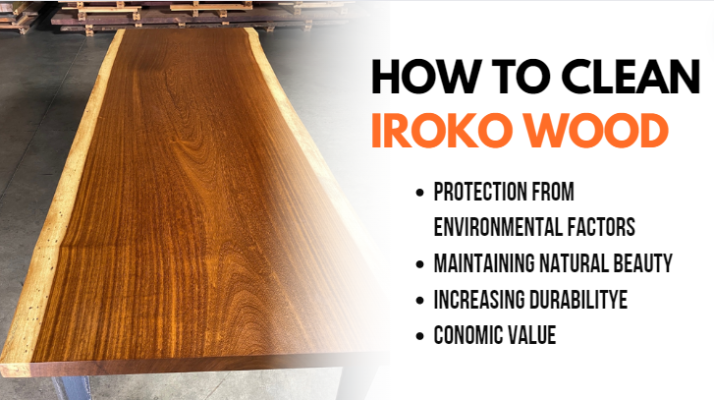
Guide on How to Care for Iroko Wood Surfaces and Furniture
To keep Iroko wood furniture in the best condition, users need to know the correct way to care for Iroko wood, carrying out basic maintenance tasks such as cleaning, regular polishing, and dealing with cracks and scratches on the wood surface.
Cleaning Wood Furniture
Both indoor and outdoor furniture pieces are susceptible to mold or termite attacks. To keep these products in the best condition, we need to regularly clean and remove dust and dirt from the surface of Iroko wood.
- Use a soft, clean, and non-lint cloth to wipe the surface. Avoid using hard materials or abrasive fibers that could scratch the wood surface.
- Use warm water diluted with mild soap to clean any stains. Avoid using excessively hot water or strong chemicals that could damage the wood surface.
- Dry immediately after cleaning to prevent water from soaking into the wood, which could lead to cracking or deformation.
Additionally, K-TIMBER offers a small tip for cleaning Iroko wood with olive oil. You can mix olive oil and lemon juice in a 1:2 ratio to create an excellent cleaning mixture. However, note to avoid polishing Iroko wood furniture with pure olive oil as it can attract dust and dirt to the wood surface.
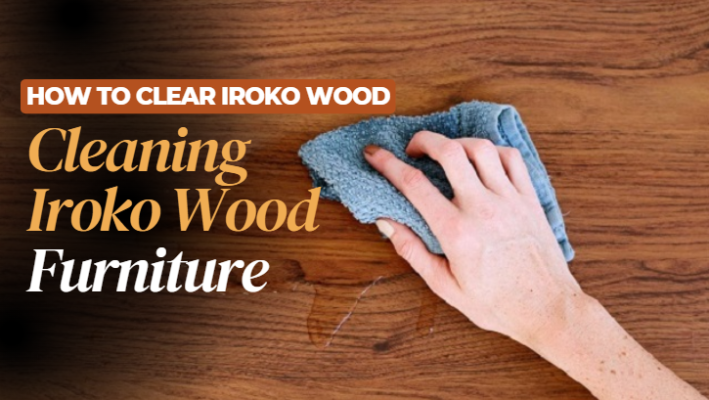
Preventing and Removing Mold
Dust creates a lot of grime in the air and sticks to the wood surface, eventually accumulating into a large dirty layer and scratching the wood surface. Use a small fiber cloth to wipe the wood surface and then dry it with a clean cotton towel. Avoid wiping the wood surface with a cloth that’s too wet and reapplying too many times, as this can lead to termite and mold conditions on the Iroko wood surface.
To care for Iroko wood and keep your furniture shining, you can start by using a vacuum cleaner with a soft brush attachment to remove mold spores from the wood surface. Then use a soft cloth dipped in soap or detergent dissolved in water and nearly dry to wipe the surface clean. Finally, dry it off to remove mold with a clean, soft towel.
Additionally, you need to keep your living space well-ventilated and dry, limiting moisture accumulation that can create conditions for mold growth.
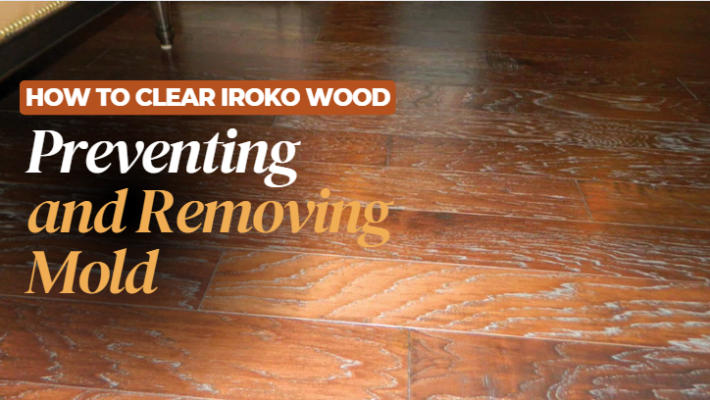
Use paste wax properly
Use wax to protect the finish of Iroko wood furniture and reduce surface scratches. Wax is more durable and less likely to smear than sprays or polishes. K-TIMBER recommends using a wax specifically designed for furniture. Depending on usage, the wax protection can last up to two years.
Wax must be applied correctly to furniture, otherwise it will leave streaks and become cloudy over time, affecting the appearance of the product. Using wax correctly can restore the shine of Iroko wood furniture. Remember to always apply the wax in thin coats and repeat multiple times for the most natural protection. Sand the wood surface to remove any grains before applying the wax.
- Apply a spoonful of wax to a 100% cotton cloth. Wrap the cloth around the wax and knead until it softens.
- Rub the waxed cloth onto the furniture surface, a small area at a time, until the scratches are less visible.
- Wipe off any excess wax with a clean, soft cotton cloth.
- Buff the Iroko wood surface with a soft cloth using an electric drill. If the wax is smeared, wipe it off with a soft cloth and continue buffing.
- For a deeper shine, apply a second coat of wax in the same way.
To maintain waxed furniture, dust regularly with a soft cloth and do not use liquid or spray furniture polishes to avoid dissolving the wax.
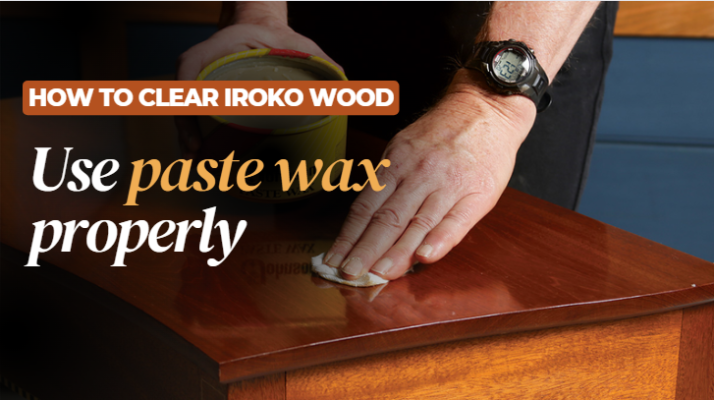
Dealing with Scratches and Cracks on Iroko Wood Surfaces
Scratches and cracks on Iroko wood surfaces are almost inevitable. For lightly scratched furniture, you can use beeswax to fill in the cracks. Then, reapply varnish to match the color of the entire product. This is a popular method used by many carpenters.
For cracks, use fine sawdust. Mix the sawdust with the appropriate glue until smooth and then heat it up. Then use the mixture to fill the crack until it is level. Choose a sawdust color that matches the color of the furniture.
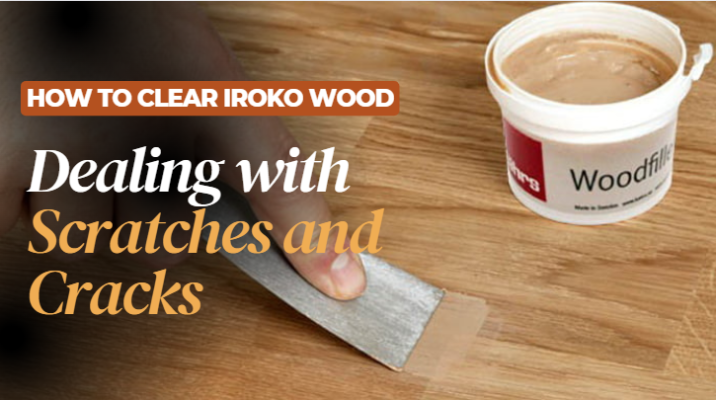
If you are looking for a reputable supplier of Iroko wood, you can contact K-TIMBER. We are one of the leading suppliers of quality African wood with over 20 years of experience in the industry. With a commitment to a good wood ratio of up to 90% according to FAS standards and the largest export volume of up to 20,000 m3/month, we are confident that we can meet all the requirements of international customers.
Above are the ways to care for Iroko wood as well as the surface and furniture care that K-TIMBER has shared with you. Caring for and maintaining is essential to ensure that Iroko wood furniture always maintains its natural beauty and increases its lifespan. K-TIMBER hopes that the above information will help you in caring for your Iroko wood furniture. If you have any further questions, please contact K-TIMBER for free consultation and support.





